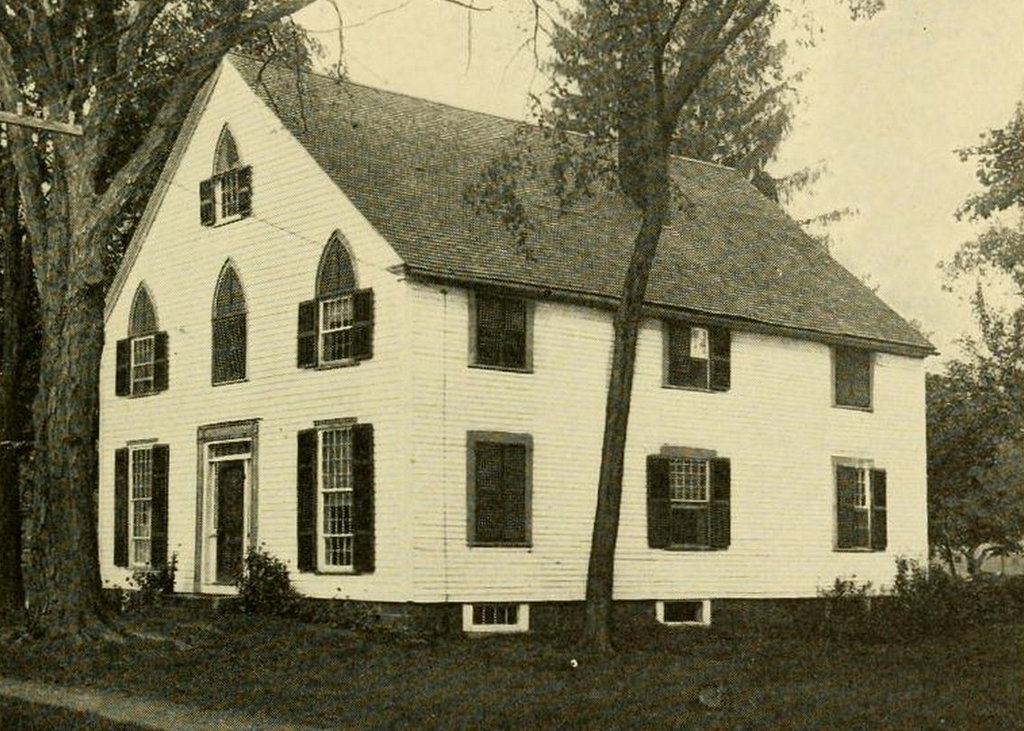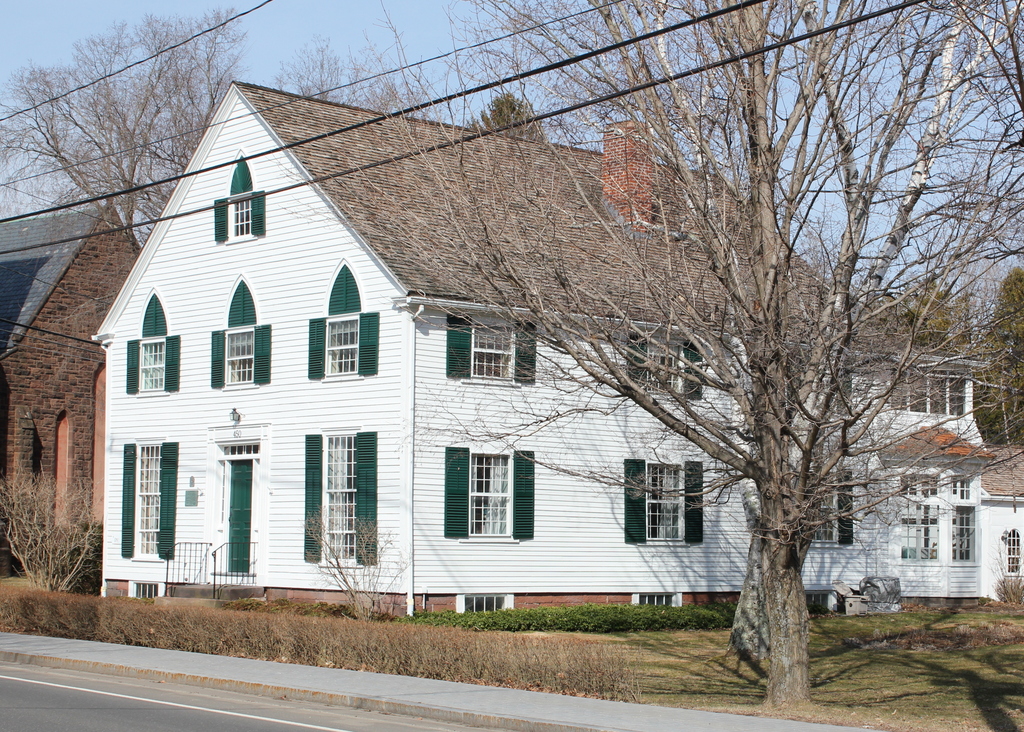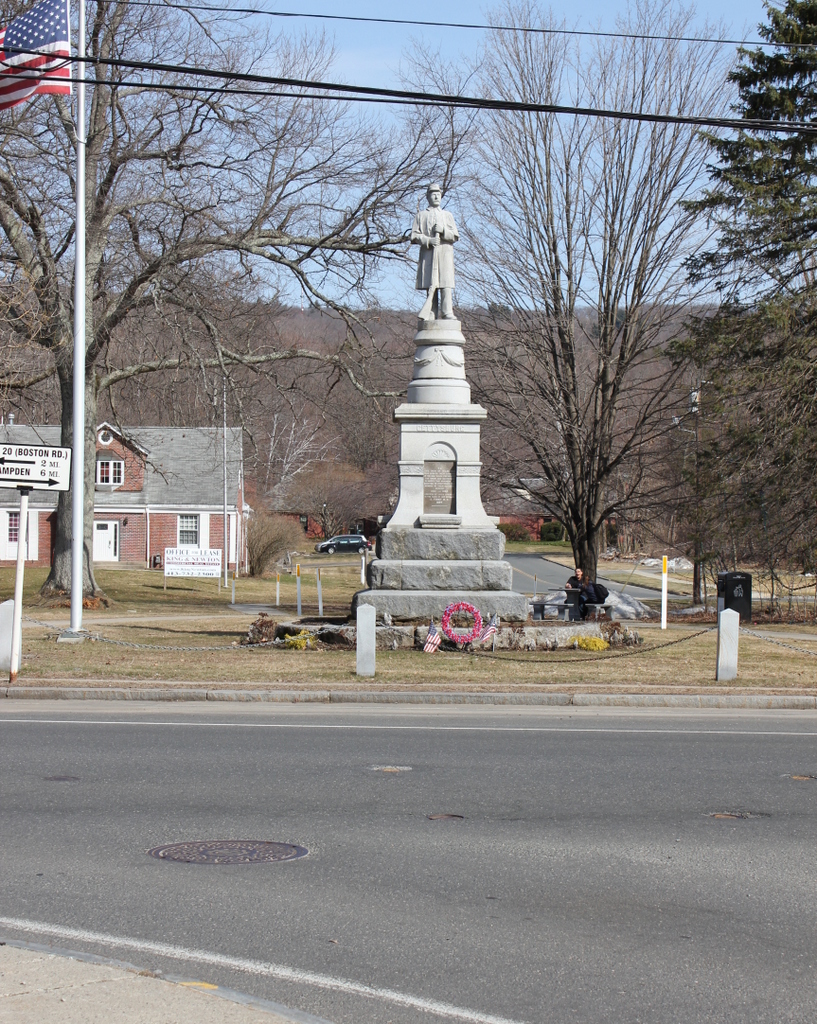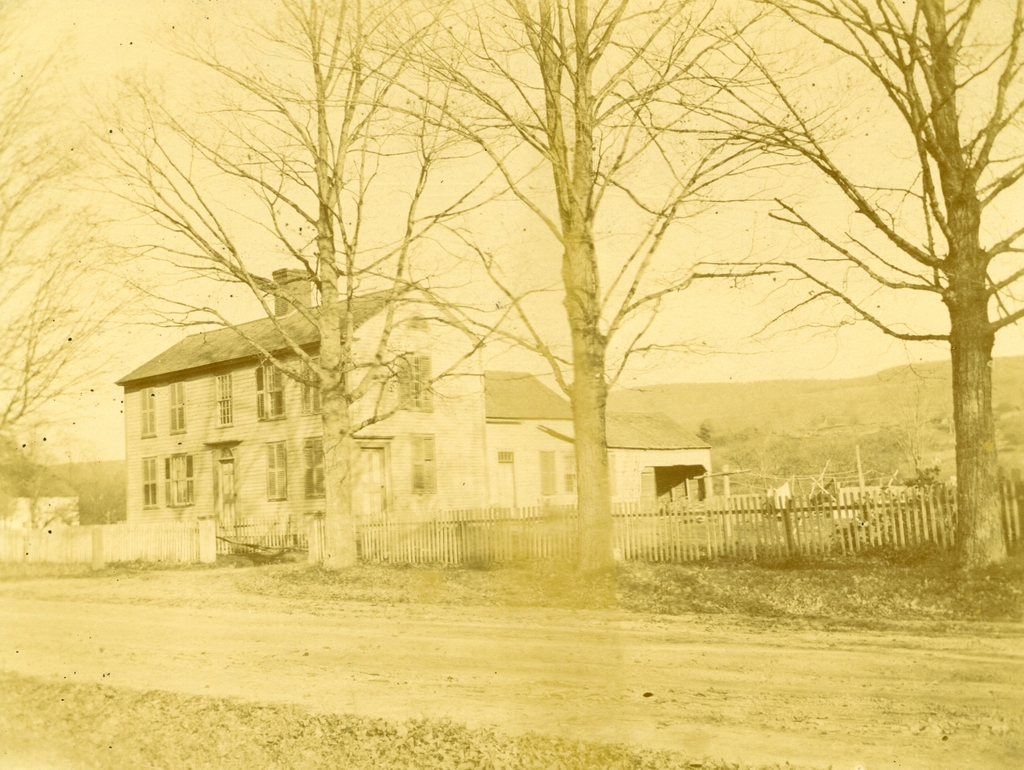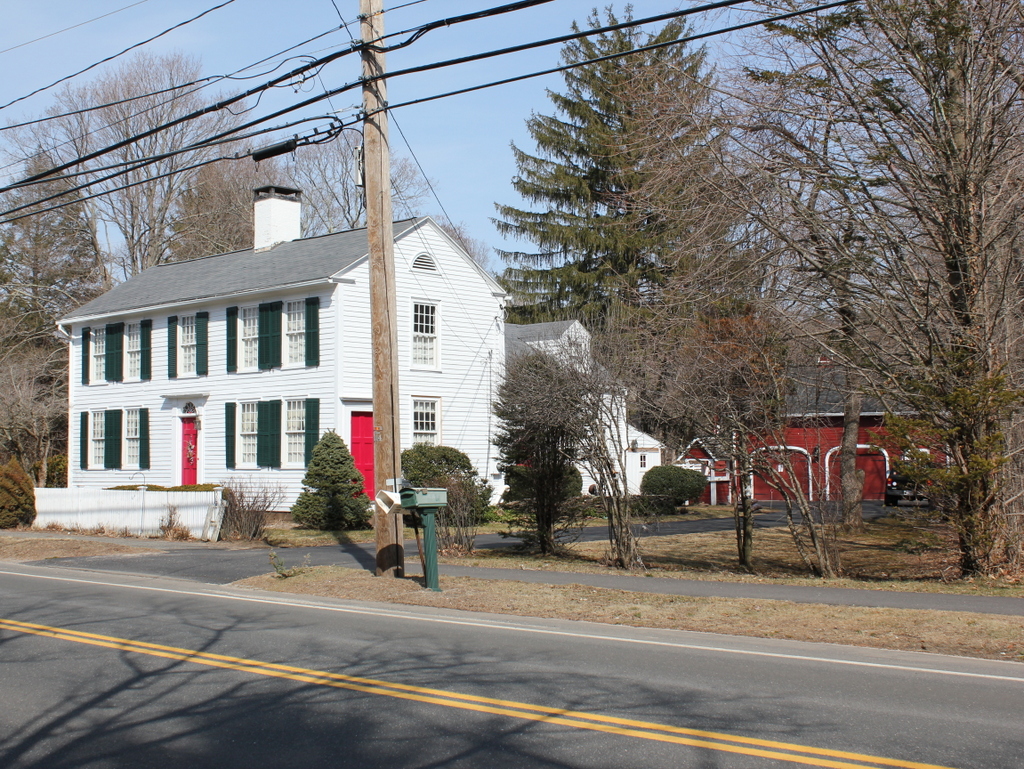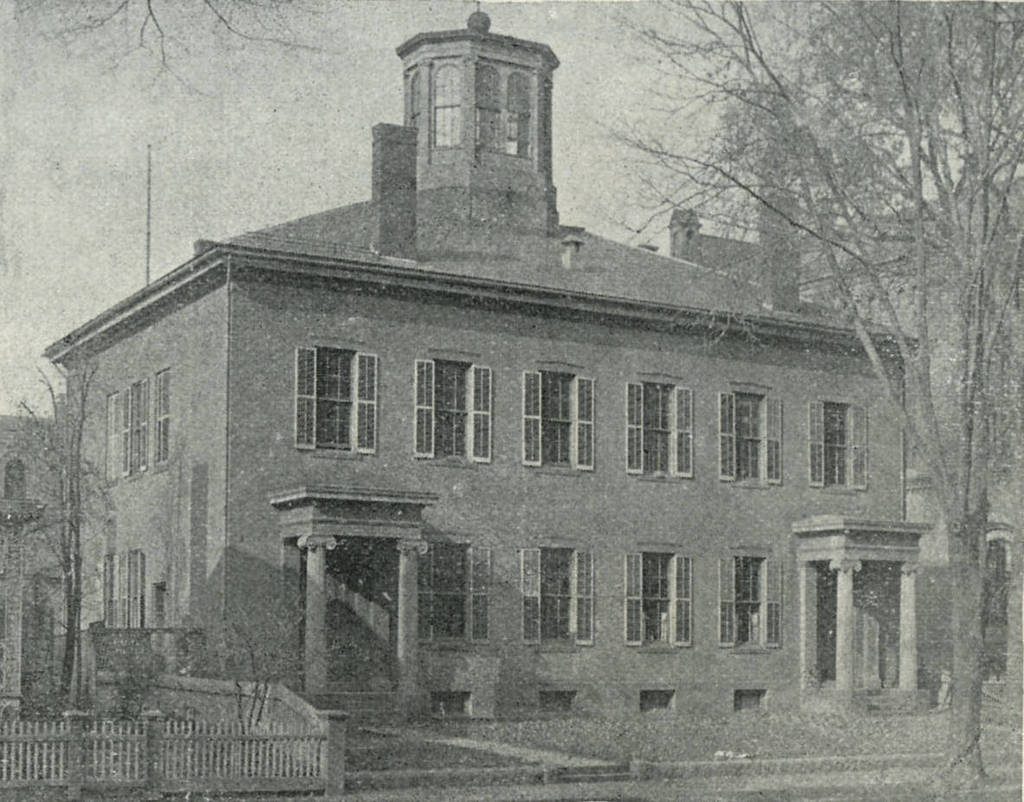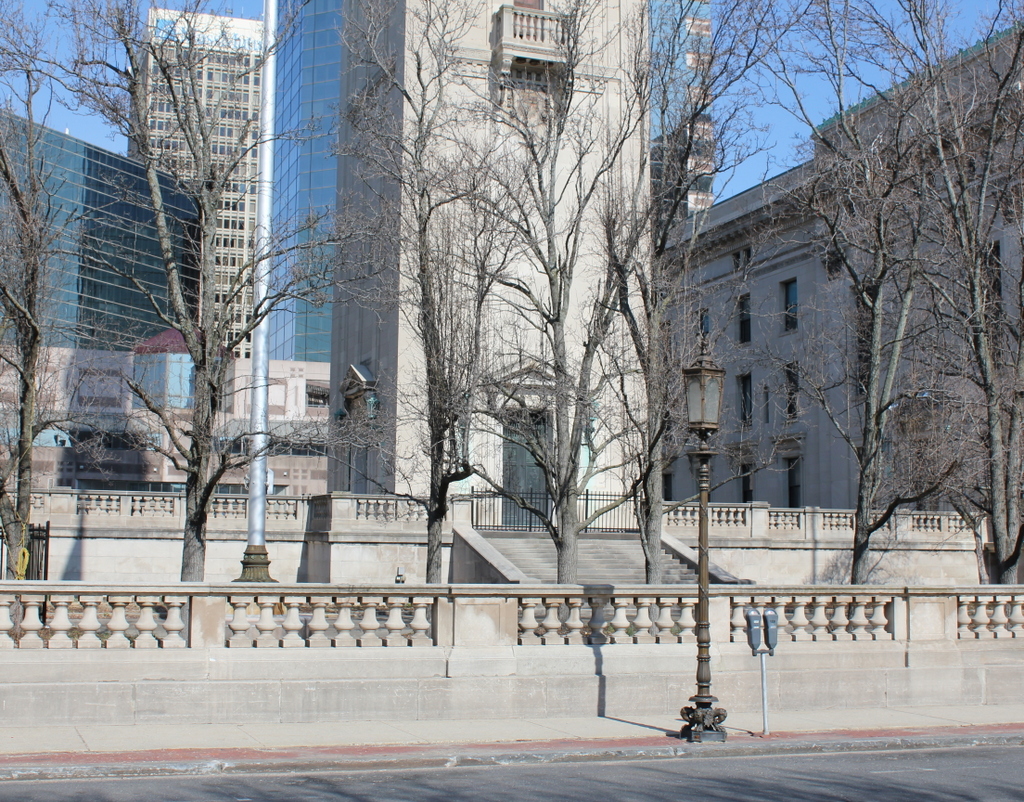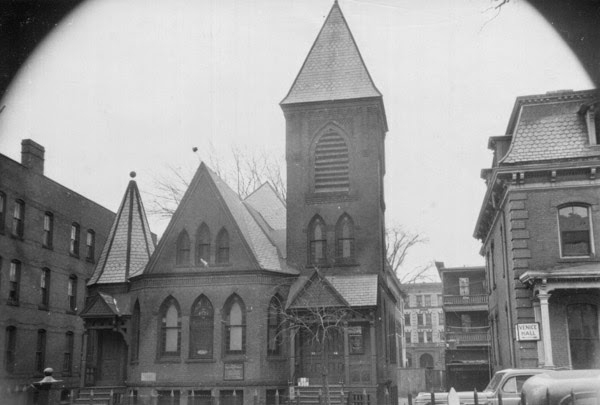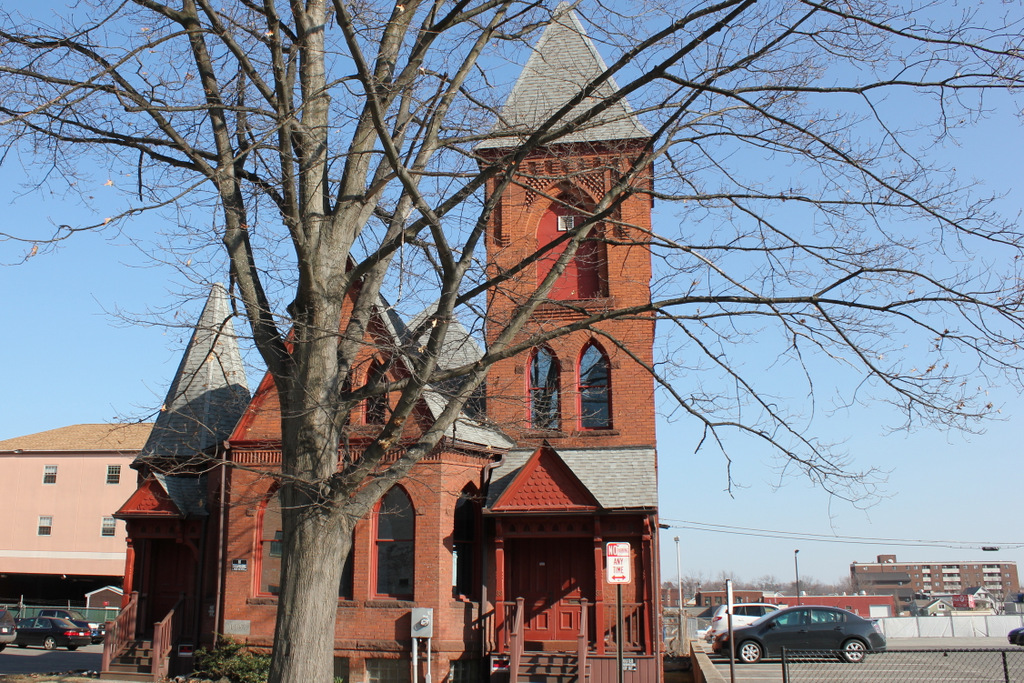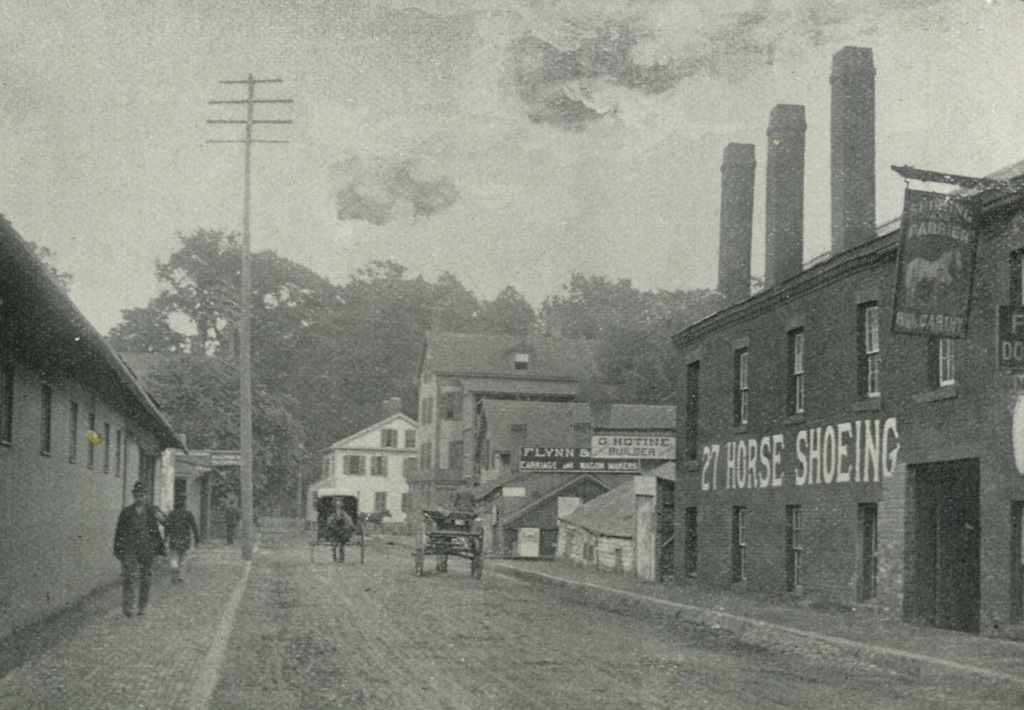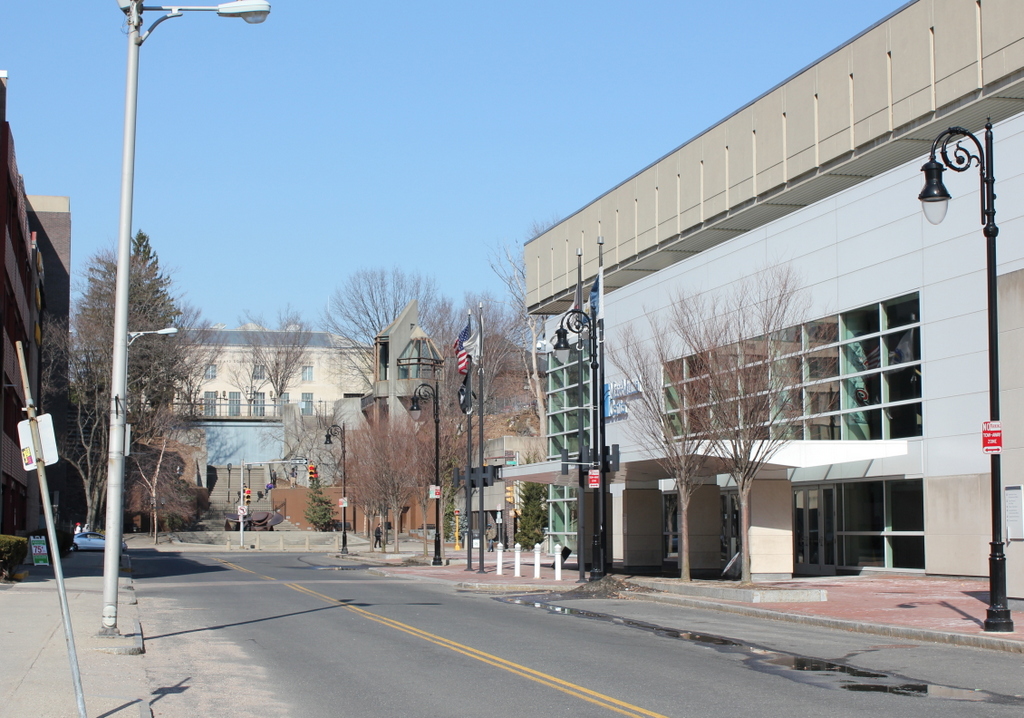The Old Methodist Meeting House at the corner of Main Street and Mountain Road in Wilbraham, probably around 1913. Photo from The History of Wilbraham, Massachusetts (1913).
The building in 2015:
The old Methodist meeting house in Wilbraham hasn’t been used as a church for over 180 years, but some of its defining architectural features are still visible, including the long windows on the Main Street side of first floor. It was built in 1793, as the first home of Wilbraham’s Methodist congregation. It was used for 40 years, before being sold and renovated into a house. As built, the church only had one floor, with windows that extended all the way up the side of the building. When it was converted to a house, the second floor was added, and the windows were split, although the pattern is still noticeable here.
At the time that the church was built, Methodism was still in its infancy in New England. Several important figures in Methodist history visited this church in the late 1700s and early 1800s, including Francis Asbury, who was one of the first bishops appointed by founder John Wesley, and Jesse Lee, who later became Chaplain of the US House of Representatives from 1809 to 1814, and Chaplain of the US Senate from 1814-1815. During the first years of this church, the interior was rather spartan; the pews were just wooden benches, and a stove was not installed until 1815, after some 22 cold New England winters without any heat. Something as novel as an organ would take even longer; the congregation didn’t purchase one until 1850, long after they had moved to a newer church building.
The Methodists built a new church across Mountain Road in 1833, and this was in turn replaced in 1870 by the stone church visible behind and to the left of the church in this photo. Today, the building is one of the oldest existing church buildings in Western Massachusetts, and according to the 1963 History of Wilbraham book, it is the oldest existing Methodist church in New England. Today, it is maintained as a museum by the Wilbraham Atheneum Society.

